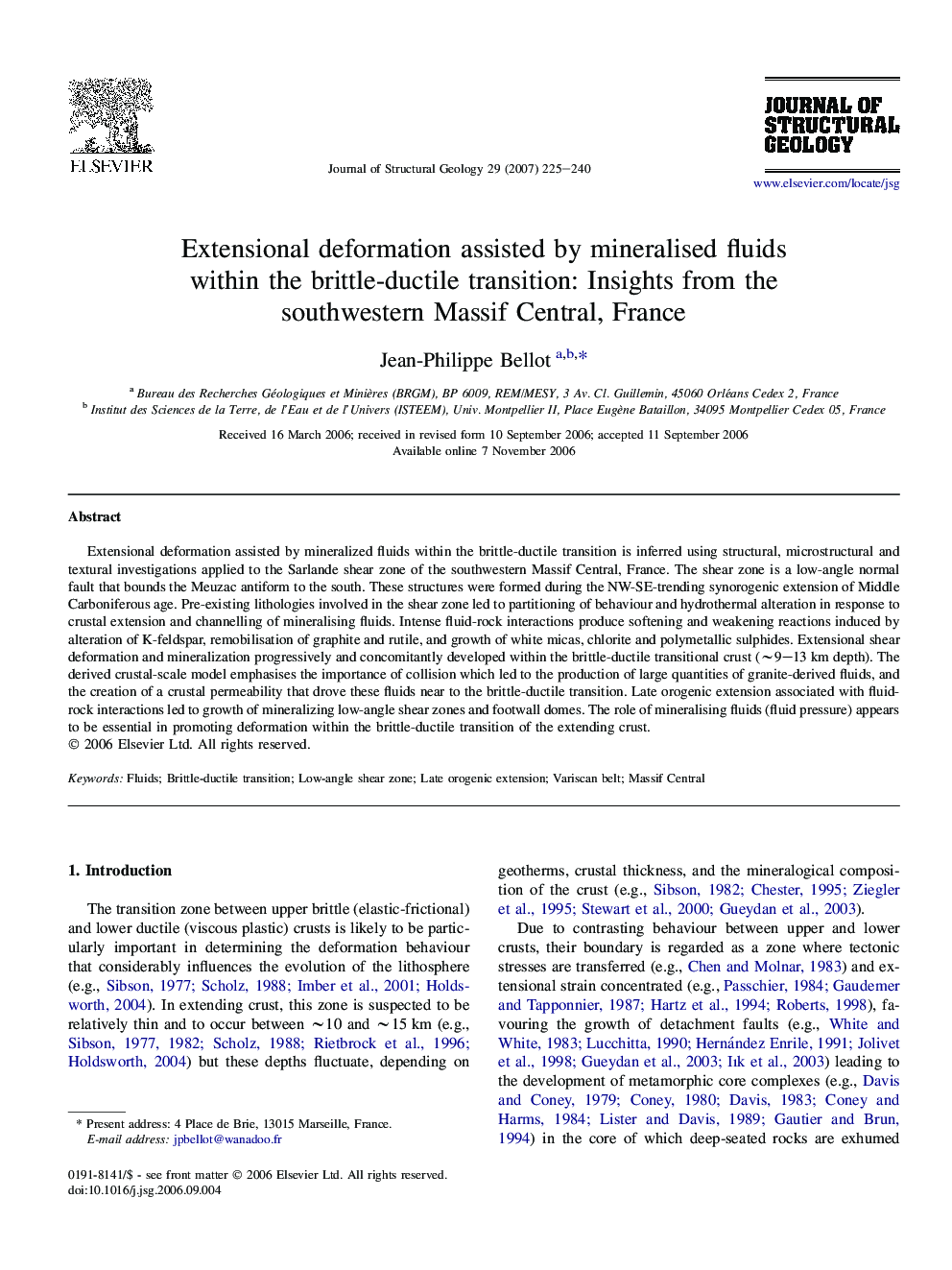| Article ID | Journal | Published Year | Pages | File Type |
|---|---|---|---|---|
| 4734223 | Journal of Structural Geology | 2007 | 16 Pages |
Abstract
Extensional deformation assisted by mineralized fluids within the brittle-ductile transition is inferred using structural, microstructural and textural investigations applied to the Sarlande shear zone of the southwestern Massif Central, France. The shear zone is a low-angle normal fault that bounds the Meuzac antiform to the south. These structures were formed during the NW-SE-trending synorogenic extension of Middle Carboniferous age. Pre-existing lithologies involved in the shear zone led to partitioning of behaviour and hydrothermal alteration in response to crustal extension and channelling of mineralising fluids. Intense fluid-rock interactions produce softening and weakening reactions induced by alteration of K-feldspar, remobilisation of graphite and rutile, and growth of white micas, chlorite and polymetallic sulphides. Extensional shear deformation and mineralization progressively and concomitantly developed within the brittle-ductile transitional crust (â¼9-13Â km depth). The derived crustal-scale model emphasises the importance of collision which led to the production of large quantities of granite-derived fluids, and the creation of a crustal permeability that drove these fluids near to the brittle-ductile transition. Late orogenic extension associated with fluid-rock interactions led to growth of mineralizing low-angle shear zones and footwall domes. The role of mineralising fluids (fluid pressure) appears to be essential in promoting deformation within the brittle-ductile transition of the extending crust.
Related Topics
Physical Sciences and Engineering
Earth and Planetary Sciences
Geology
Authors
Jean-Philippe Bellot,
